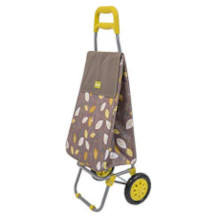Cabin luggage purchasing advice: how to choose the right product
- What You Need to Know
- Cabin luggage must have certain dimensions that comply with airline guidelines. However, these are not always the same.
- As a rule, cabin luggage cases are 55 x 40 x 20 centimetres in size and weigh between 2.0 and 3.5 kilograms with a volume of 30 to 50 litres.
- Hard-sided suitcases protect the contents particularly well against shocks and weather conditions such as rain, whereas soft-sided suitcases are more flexible and lighter.
- The number of wheels and the handles are decisive for the handling of the suitcase.
Cabin luggage for inexpensive travel
At the beginning of the 20th century, passenger flights were still a rarity and the ticket cost a fortune. Today, some airlines offer flights within Europe that cost less than a long-distance bus ticket or a meal in a restaurant – but on one condition: you may only take your hand luggage with you. As soon as you hand in a suitcase, you add 30 to 50 euros per flight. That is why passengers are increasingly travelling “light”. With such low prices, even a short trip is worthwhile, so a large suitcase is not necessary. You don’t have to do without it completely, but depending on the airline, your hand luggage may only have certain dimensions and may not exceed a specified weight.
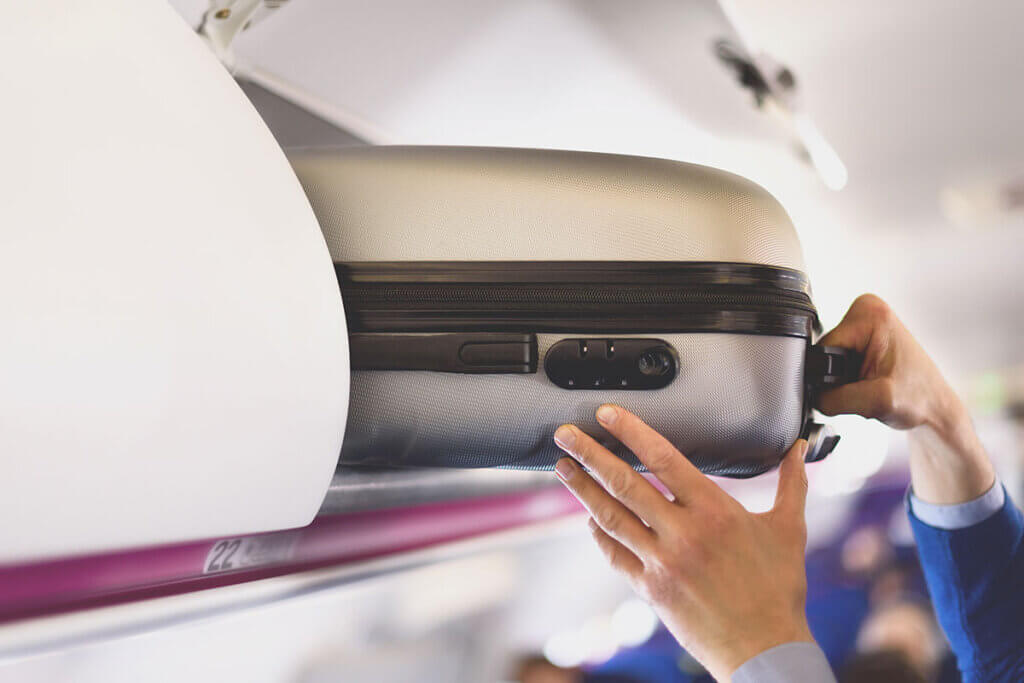
For this purpose, cabin luggage – also known as hand luggage suitcases or trolleys – are available in various sizes. Experienced, sophisticated travellers can travel for weeks with a small cabin luggage. As long as you focus on the essentials, like clothes and only the most necessary electronics, you can do without the suitcase drop. However, don’t forget that the suitcase has to go through the hand luggage check. This means you’ll have to do without some things like liquids or sharp objects. You should also be careful when buying certain souvenirs from your holiday. Olive oil or schnapps may not travel in your hand luggage unless they were bought in the airport after the security check. Cabin luggage also saves time because you don’t have to wait at baggage claim.
Permitted size and weight: unfortunately not uniform
Although every airline specifies the permitted size and weight of hand luggage, this information can vary from company to company. Some airlines have reached a certain consensus, based on the recommendation of the IATA (International Air Transport Association): 55 x 40 x 20 centimetres (height x width x depth) or the sum of 115 centimetres is recommended. This usually corresponds to suitcase size S. However, you cannot always rely on such general information. It is best to find out in advance which hand luggage size is permitted on your flight. Often there is also an upper weight limit; there can also be big differences, for example between 5 and 23 kilograms.
If you exceed the specified dimensions, you will have to hand in your luggage. This costs money on the one hand and time on the other, as you have to wait for your suitcase after arrival.
Whether and how strictly these guidelines are enforced depends on the airline and the airport. Sometimes the check is not very strict, so you can get through even with a slightly larger hand luggage. However, you should not rely on this. It is particularly annoying if you are allowed through on the outward flight but have to hand in your hand luggage for a fee on the way back.
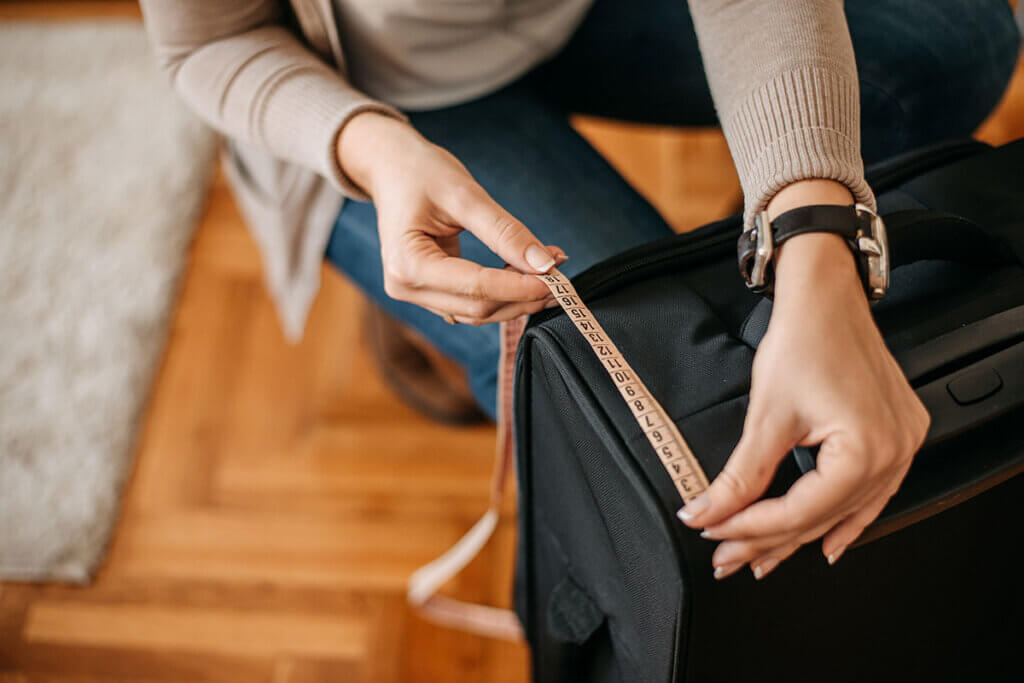
The following table provides some examples of airlines and their permitted hand luggage sizes. These are the minimum fare or Economy Class. If the tickets are not Economy, some airlines such as Lufthansa, Ryanair and EasyJet also allow larger pieces of luggage or an additional piece of hand luggage.
| Airline | Dimensions in centimetres (height x width x depth) | Weight in kilograms |
| Aegean Airlines | 56 x 45 x 25 | 8 |
| Air China | 55 x 40 x 20 | 5 |
| Air France | 55 x 35 x 25 | 12 |
| American Airlines | 56 x 36 x 23 | Keine Angabe |
| British Airways | 56 x 45 x 23 | 23 |
| EasyJet | 45 x 36 x 20 | Keine Angabe |
| Emirates | 55 x 38 x 20 | 7 |
| Lufthansa | 55 x 40 x 23 | 8 |
| Ryanair | 40 x 20 x 25 | Keine Angabe |
| Swiss | 55 x 40 x 23 | 8 |
The outer material: hard, soft or mixed?
On the one hand, a suitcase should offer a lot of space, and on the other hand, it should be as shockproof as possible – after all, there can be strong vibrations during a flight, whether in the cabin or in the cargo hold. Depending on where you prioritise, either a hard or a soft-sided suitcase is the better choice.
Hard-sided suitcases: the tough nuts to crack
Hard-shell cases are usually made of polypropylene, polycarbonate, ABS plastic or Curv. All materials are impact and break resistant. In addition to plastics, aluminium is sometimes used, which can withstand very extreme weather.
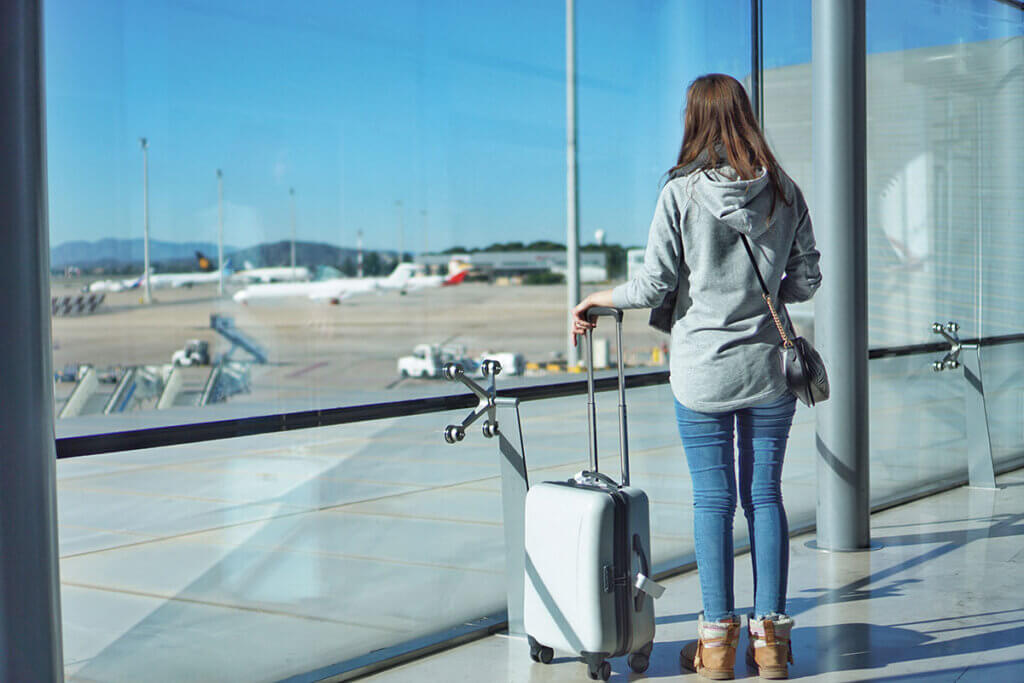
Such cabin luggage is particularly robust. Thanks to the hard shell, the contents remain protected in case of bumps and falls. In addition, the suitcases are mostly waterproof, durable and easy to clean. On the other hand, they are more expensive and heavier than soft-shell cases. Because of the rigid shell, hard cases are also less flexible. It is not so easy to force a hard-shell case that is too full. Although the cases are robust and protect the contents effectively, dents and scratches perpetuate themselves quite quickly on the surface. Last but not least, hard-shell cabin luggage has no outer shells.
Pro points
- Robust
- Waterproof
- Durable
- Easy to clean
- High protection of luggage
Drawbacks
- Expensive
- Inflexible
- Heavy
- Dents and scratches quickly visible
- No outside pockets
Soft-sided suitcases: Flexible lightweights
Soft-sided suitcases are usually made of plastics such as polyester or nylon. Leather is used somewhat less frequently, which scores points for its appearance and durability, but is expensive and requires a lot of care.
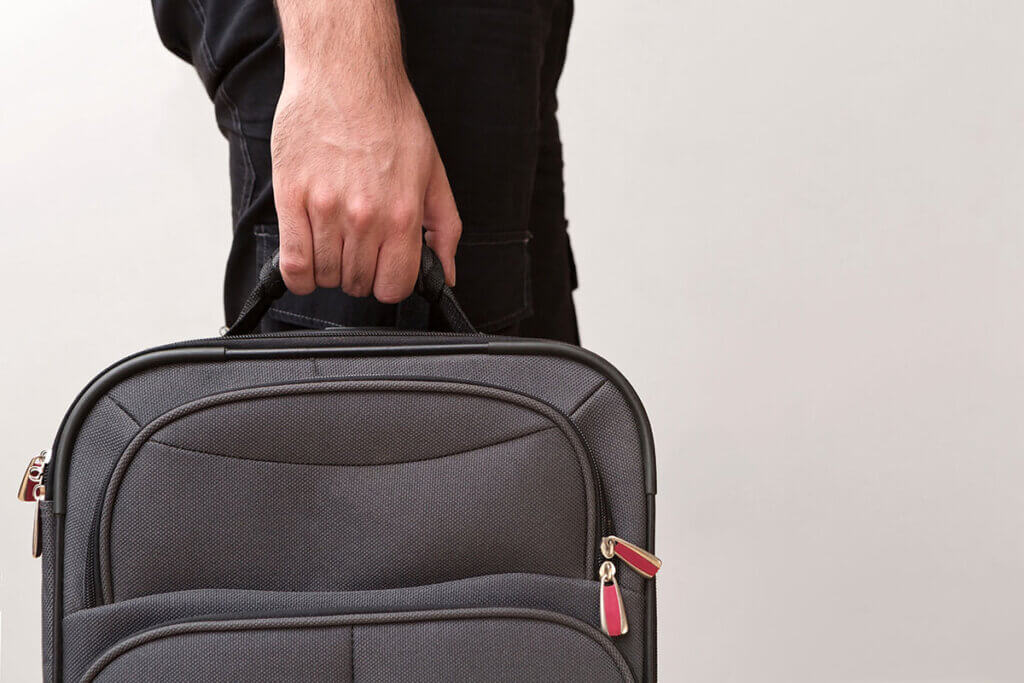
Hand luggage suitcases with a soft shell are particularly flexible because they adapt to the contents. This also allows them to be stored in a space-saving way. Soft-shell carry-on suitcases are inexpensive and have a low tare weight. The outside pockets not only offer additional storage space, but also quick access. In themselves, the cases are very hard-wearing, but the contents are not protected as much as with hard-shell cases. Furthermore, such cabin luggage is not waterproof, but merely water-repellent. Cleaning them is a bit more cumbersome – a damp cloth is not enough.
Pro points
- Lightweight
- Inexpensive
- Flexible
- Hard-wearing
- Easy to stow
- External pockets available
Drawbacks
- Not waterproof
- Little protection of contents
- Difficult to clean
Semi-hard cases: A compromise for the indecisive
Semi-hard cases are a good compromise for those who cannot decide between soft and hard cases. Their outer material is the same as a soft-shell case, but the corners and edges are reinforced, which makes them more robust. Despite their robustness, they have a low tare weight and are relatively flexible. They usually also have external compartments. However, they are not waterproof. They are also robust compared to soft-shell cases, but do not protect the contents as well as hard-shell cases. The price, just as with soft and hard cases, depends mainly on the model and less on the cabin case type.
Pro points
- More robust than soft-shell cases
- Low tare weight
- Flexible
- External compartments available
Drawbacks
- Not waterproof
- Contents less protected than hard cases
Further purchase criteria
When buying a cabin luggage, one of the factors that plays a role is the handling, which is mainly based on the number of wheels. Since many airlines allow hand luggage to weigh less than ten kilograms, the tare weight of the suitcase is also important. The choice of volume or interior depends on how long you will be travelling and what you want to take with you. In addition to being break-proof, a suitcase should also be protected by some kind of lock mechanism to prevent unauthorised access.
Handling
While a holiday is for relaxation, getting there is often stressful. Ideally, your hand luggage will not cause further inconvenience. There should be at least three handles: one on top, one on the side and a telescopic handle to allow you to push or pull the suitcase without having to bend. The telescopic handle should be easy to extend and fold without jamming. Furthermore, the wheels should roll effortlessly, whether there are four or just two. Adjustable feet are very helpful for cabin luggage with two wheels, as they give the cabin luggage a stable stand.
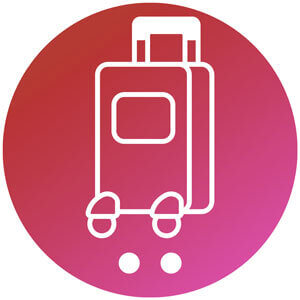
Two wheels
Suitcases with two wheels cannot roll away on a sloping surface. This makes them suitable for sitting on, if necessary. In addition, the wheels on such cabin luggage suitcases are often more robust and perform better on uneven surfaces. However, since you are pulling the two-wheel suitcase behind you, you are putting a little more weight on your arm than is the case with a model with four wheels. In the long run, cabin luggage of this kind is therefore more strenuous to transport.
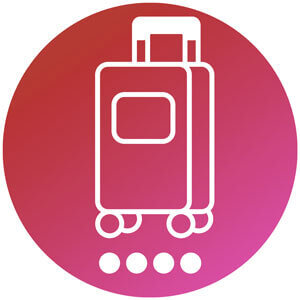
Four wheels
Suitcases with four wheels are more manoeuvrable because they can be turned 360 degrees and pushed in any direction. They also do not need to be tilted and are therefore less stressful on the arm. Because they are more popular, you have a wider choice of models. On the other hand, castors are more susceptible to damage. Even one defective castor makes pushing or pulling much more difficult. If you want to sit on the cabin luggage for a short rest, you must also make sure that it does not roll away.
Dead weight
Unless the airline you are flying with specifies a maximum allowable weight, tare weight is not particularly important. At most, it will make the suitcase heavier or lighter when you lift it. Even with a high upper limit of about 23 kilograms, the tare weight hardly plays a role. After all, it is hardly possible to reach this weight with a cabin luggage.
In most cases, however, the maximum weight for hand luggage is less than ten kilograms. In this case, the tare weight can be decisive. If you are not allowed to take more than 7.0 kilograms with you and your suitcase weighs 3.5 kilograms, there is hardly any leeway left. The less the suitcase weighs, the more the luggage may weigh. However, lightweight suitcases are usually not particularly robust. Most cabin luggage weighs between 2.0 and 3.5 kilograms. Some particularly heavy models even weigh over 4.0 kilograms. The tare weight alone comes very close to the weight limit of, for example, Air China.
Interior and volume
When it comes to interior fittings, the number of compartments or pockets inside the suitcase is important. If you are going on holiday, a hand luggage suitcase with many compartments is not advisable, as they only take up space. A large main compartment with a mesh pocket, for example for laundry, is more suitable in this case. On the other hand, a suitcase for business trips can benefit from several compartments. These can be used to carefully store documents and electronics such as smartphones, laptops and accessories. Since business trips tend to be short, you will most likely not need as much space for clothes.
Furthermore, packing straps can make packing easier, especially if the suitcase is very full. This allows you to squeeze each side as tightly as possible. This packing aid is particularly advantageous for hard shell suitcases, which are not very flexible.
Although most cabin luggage has similar dimensions, their volume can vary greatly. Since every centimetre counts with such small suitcases, you should look for a model with as much volume as possible. The capacity of a suitcase with IATA external dimensions can be between 30 and 50 litres. An expansion fold increases the volume of the suitcase. This is opened with a zip and – as the name suggests – expands the suitcase. However, this expansion also affects the outer dimensions of the suitcase. So make sure that you do not exceed the limit.
Security
Even if you always have your cabin luggage with you, there should be a means of locking it. If your suitcase does not have an integrated lock, you can fit it with an external one. However, the former is usually more secure. Usually it is a three-digit combination of numbers.
Many suitcases are equipped with a TSA (Transportation Security Administration) lock. However, such a lock is only relevant for travellers to the USA who check in their cabin luggage. On arrival, the TSA, the security service for American airports, may search your suitcase. TSA locks can all be opened with the same key available to TSA employees. This means your suitcase will not be forced open and damaged in the process. As carry-on luggage, on the other hand, you always have it with you and could open it if asked to do so.
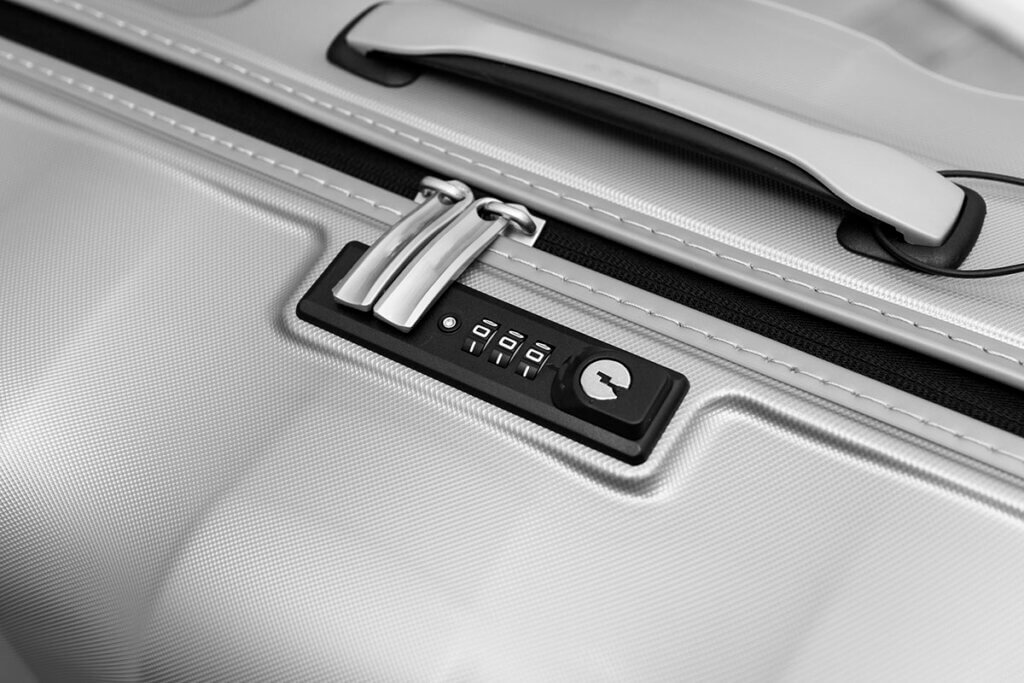
Design
For most travellers, the appearance of the suitcase is secondary. Even if you do not attach great importance to a fancy design, you should choose a suitcase that is easily recognisable to you. It often happens that passengers have very similar-looking suitcases. Whether in the cabin compartment or at baggage claim, if everyone has the same black suitcase, confusion can quickly arise. If your cabin luggage does not have any distinctive features, you can tie a colourful bow around one of the handles or decorate it with stickers.
Cleaning tips
The lining of your cabin luggage can usually be removed for cleaning and washed by hand or in a washing machine. It is best to follow the manufacturer’s instructions. You can simply soak the wheels in a little water. After a few minutes, the coarse impurities will come off and you can wipe off the rest with a cloth.
Cleaning a hard shell case is extremely uncomplicated. A damp cloth is usually enough to get it clean. With a soft-sided case, on the other hand, it is a little more complicated, as dust, dirt and liquids can collect on the shell. First, go over the entire surface with a hoover to remove dust and sand. Then wipe the case with a damp cloth. Stubborn dirt is best removed with a soft brush. When you have finished cleaning, allow the case to dry before storing it again. Stowing a damp suitcase can lead to mould. It is best to place it open in a dry place until it is dry.


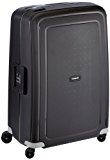
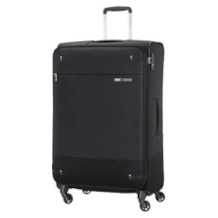
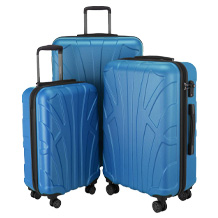
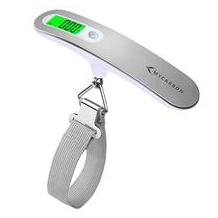
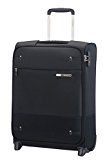
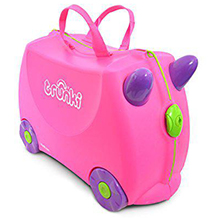












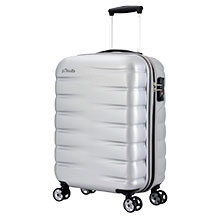

 8,587 reviews
8,587 reviews




